What exactly is The Sandman?
Yeah, ok. But what is it about?
It could be summarized as The Life and Tribulations of Dream of the Endless.
Or, when it comes down do it, the whole thing can be described in 15 words as it was by Neil Gaiman himself:
“The Lord of Dreams learns that one must change or dies, and makes his decision” .
The Endless who?
The Endless are anthropomorphic embodiments of aspects of nature. They have existed since the first living being in the universe breathed. It is really hard to describe what or who they are – ideas, patterns, that are what they represent. They are bound by duty to perform their functions and seem to think they lack the freedom to completely escape them. If they die, they are simply replaced by another aspect of themselves. They oversee their own realms and everything connected to them.
They are seven siblings:
Death came next – every human being sees Death twice – once when they open their eyes (but they have no recollection of that) and secondly when they are about to close them for the last time. Instead of being the grim reaper that we are used to, Death in The Sandman series is the coolest of characters, youthful and is the closest to Dream. And she loves Mary Poppins!
Then there is Dream – but we will get to him later.
Destruction is AWOL for most of the series. He abandoned his duties on the 17th century when he predicted the construction of the atomic bomb and refused to be part of it. He is known as the “Prodigal”. He may be the wisest of the siblings.
Then there are the twins, Despair and Desire. Despair looks into our world via windows from her realm -the appear like mirrors in ours. “Sometimes you will look into a mirror and feel the eyes of Despair upon you, feel her hook catch and snag on your heart”. Despair likes to keep to herself, Contrary to her twin brother-sister Desire, the trouble maker of the family and one who has a rivalry with Dream. “Desire is everything you have ever wanted. Whoever you are. Whatever you are. Everything.
The youngest is Delirium, who used to be Delight. She comes across as just a lost kid and her appearance is variable and her eyes are mismatched. She speaks in incomprehensible riddles as if her mind was not all there although sometimes we get a glimpse of a sound thought. Rarely. Her realm is open to humans but “those few who have made the journey have been incapable of reporting back more than the tiniest fragments”.
Dream, Dream, Dream
And then of course, we have Dream, The Sandman himself.
Dream is our protagonist as we already know. He regulates the Dreaming, and it’s responsible not only for Dreams and Nightmares but also for everything connected to imagination and inspiration. In his library for example, there are all the books that were ever dreamed of and thought about but never came to existence. Out of the Endless he seems to be the most serious one (well, save for Destiny) and extremely conscious of his function as embodiment of dreams. He is rather obsessed with his responsibilities, a haughty, unforgiving, strict lord whose actions are many times downright cruel but which is in the end fueled by his belief about his place in the cosmos and in what he represents. It is this belief that led him to choose the paths that he chose, one that has kept him apart from most of his brothers and sisters that has made him a terrible and terrifying lover to his paramours and the worst possible father to his son Orpheus.
After his period of imprisonment, he comes to realize that in many ways he needs to change and this realization has serious repercussions throughout the story. There is a choice to be made except that there may be no real choice for a being that has been set in its ways for billions of years.
Dream is one of the Great and Tragic Heroes and you can not help but to be enthralled by the complexity of this character – he may not be the most sympathetic Endless in the series (that role is played by his sister Death) but he truly is the embodiment of everything a truly amazing protagonist should be – powerful and yet vulnerable; with cruel streaks which can turn into kind acts; above all one that is willing to learn even if it takes him too long. He even develops a sense of humor as the story progresses. And we, readers want to be there right with him, at the end.
The Journey
I have said that we could call The Sandman, the Life and Tribulations of Dream of the Endless and this is true…to a point. Because it is so much more than that – it is an intelligent take about life, the universe and everything. Neil Gaiman manages to incorporate everything you can think of in his story: his own take on religion for example at how Gods have been created by the human being’s imagination and how they fade away when forgotten ( a theme that seems to be close to his heart and one that he expands in American Gods). Or to bring to the story Fallen Angels and Demons.
For instance, In The Season of Mists, The Sandman Volume 4, Dream must journey to Hell to free Nada, his ex-lover which he has condemned to an eternity of suffering for refusing living with him (yes, I told you he could be cruel) and by doing so, he must face Lucifer Morningstar, which in this re-imagining is someone who has been taking care of hell and is sick of it. It is one of the most amazing characters in the series (and one that has generated a spin-off for himself). One that is not the black and white devil we have come to know from many other tales, but one that is utterly simpathetic and provocative and in the most beautiful shade of grey.
Lucifer then gives Dream the key to hell and Dream must decide what to do. Because this is no trivial matter he is visited by all matter of gods from Chinese, Norse, Egyptian mythologies, by envoys sent by Chaos and by Order, a couple of Fey people and two Angels sent by God himself to observe the proceedings. This is a volume that is not only intellectually stimulating but also pivotal to the end game – even if at the time, you are not aware of it. When things fall into place in the end, I stared awestruck at the pages.
Tell us more!
There are also several short stories and one in special is pure magic. In Dream Country, The Sandman, volume 3 , there is one short where Dream asks Shakespeare and his troupe to perform a Midsummer’s Night Dream to a most special audience – Queen Titania and Lord Auberon and their elves. The story won the World Fantasy Award in 1991 for Best Short Fiction and it was such an uproar that in the next day the rules of the competition were changed so that comic books could never win it again.
I could also, theoretically, talk about how there are philosophical themes throughout the story. Dream once, in Shakespearean times meets a man who has made a deal with his sister Death to never die and one that he meets every 100 years – they become friends and now and then the same man will make an appearance. Will he ever tire of immortality?
But I am afraid I may be boring you to death.
But if you don’t care about any of this, mythology, psychology, philosophy, it is bound to be something here for you. There is humour, action, horror, love. Crossovers with other DC characters: Superman, Batman, Constantine.
And the text itself is pure magic. The illustrations are awesome and convey the story perfectly.
And there are the interactions between Dream and Death that are pure fun.
“You are utterly the stupidest, most self-centred , appallingest excuse for an anthropomorphic personification on this or any other planet! An infantile, adolescent , pathetic specimen!”
You tell him, big sis!
I highly recommend it. It is not only an amazingly profound piece of literature but also an incredible work of art. This may surprise you as at the end of the day, it IS a series of comic books but one that has brought the medium to a high standard. Each of the new volumes start with an introduction by a famous author (including one Stephen King) and one of them says “If this is not literature, nothing is”.
The Sandman from me, gets a 10. It is pure perfection, a classic in the genre and one that I will be reading until I close my eyes for the last time and Death comes to visit me.







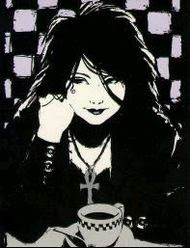
.jpeg)
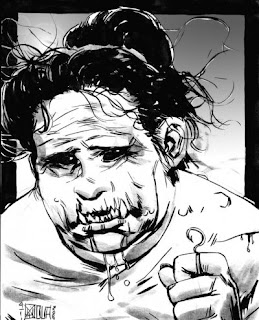

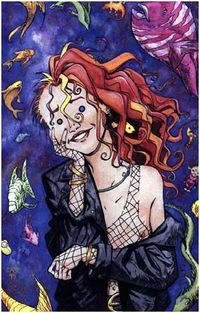

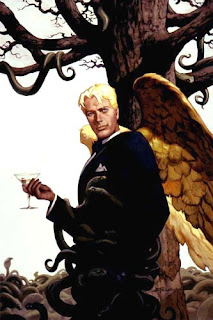

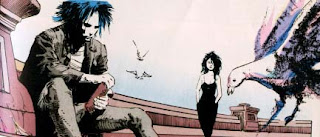
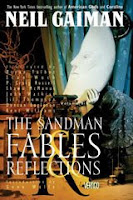

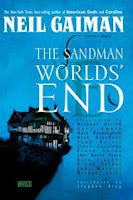











7 Comments
M.
June 30, 2008 at 7:23 amPhilosophical questions/spiritual pondering much?
Wow. I keep hearing about Neil Gaiman but hadn’t realized the complexity involved in the work. Sounds intriguing and muchly thought provoking.
Sarai
June 30, 2008 at 7:39 amWow so I guess I should seriously look into this. A 10 and pure perfection sealed the deal for me not to mention you made it sound really, really cool!
little alys
June 30, 2008 at 11:12 amI enjoy Neil Gaiman’s stuff, but this is one of the best (and I haven’t even fully read it all in a complete setting). Thanks for the great review and refreshing my memory on a very good series. ^_^
meljean brook
June 30, 2008 at 1:05 pmEverything you said. I love, love these books. From the writing to the art, just perfect.
Ana
June 30, 2008 at 1:31 pmM and Sarai, you must really try Neil Gaiman, specially The Sandman. It took me ages to summon the courage to get the first one, but when I did, there was no turning back.
LA and Meljean, thanks. As I was writing this post I had all the issues around me and I read through them all again. They are easily the prettiest books I have – it gets to a point where I caress the covers. Yes, I am sad. and obsessed with The Sandman.
Kate
June 30, 2008 at 6:48 pmOk…so now I’m really intimidated to review “Preludes and Nocturnes” for such an expert crowd. Sheesh. But a great and detailed overview nonetheless.
Empty Your Heart Of Its Mortal Dream
May 6, 2010 at 3:04 am[…] and either didn’t know where to start or wanted to know more, Ana over at Booksmugglers wrote this fantastic introduction to The Sandman two years ago which is really helpful, so check it out. Tags: morpheus, neil gaiman, […]